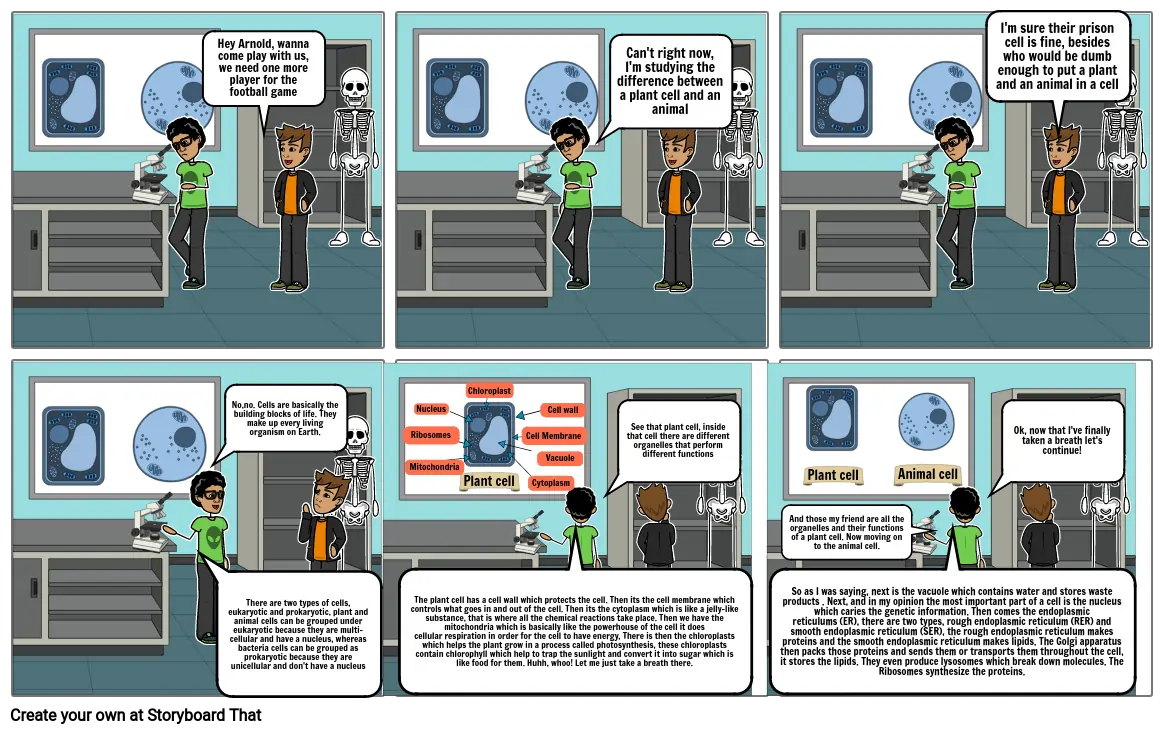Plants & Animal cells

Storyboard Text
- Hey Arnold, wanna come play with us, we need one more player for the football game
- Can't right now, I'm studying the difference between a plant cell and an animal
- I'm sure their prison cell is fine, besides who would be dumb enough to put a plant and an animal in a cell
- There are two types of cells, eukaryotic and prokaryotic, plant and animal cells can be grouped under eukaryotic because they are multi-cellular and have a nucleus, whereas bacteria cells can be grouped as prokaryotic because they are unicellular and don't have a nucleus
- No,no. Cells are basically the building blocks of life. They make up every living organism on Earth.
- The plant cell has a cell wall which protects the cell. Then its the cell membrane which controls what goes in and out of the cell. Then its the cytoplasm which is like a jelly-like substance, that is where all the chemical reactions take place. Then we have the mitochondria which is basically like the powerhouse of the cell it does cellular respiration in order for the cell to have energy, There is then the chloroplasts which helps the plant grow in a process called photosynthesis, these chloroplasts contain chlorophyll which help to trap the sunlight and convert it into sugar which is like food for them. Huhh, whoo! Let me just take a breath there.
- Ribosomes
- Mitochondria
- Nucleus
- Plant cell
- Chloroplast
- Cell Membrane
- Cytoplasm
- Vacuole
- Cell wall
- See that plant cell, inside that cell there are different organelles that perform different functions
- So as I was saying, next is the vacuole which contains water and stores waste products . Next, and in my opinion the most important part of a cell is the nucleus which caries the genetic information. Then comes the endoplasmic reticulums (ER), there are two types, rough endoplasmic reticulum (RER) and smooth endoplasmic reticulum (SER), the rough endoplasmic reticulum makes proteins and the smooth endoplasmic reticulum makes lipids. The Golgi apparatus then packs those proteins and sends them or transports them throughout the cell, it stores the lipids. They even produce lysosomes which break down molecules. The Ribosomes synthesize the proteins.
- Plant cell
- Animal cell
- And those my friend are all the organelles and their functions of a plant cell. Now moving on to the animal cell.
- Ok, now that I've finally taken a breath let's continue!
Over 30 Million Storyboards Created

